The Mizuchi Katana is named after its tsuba design that depicts a dragon rising from the ocean/water which we believe is a “mizuchi“. On the other side of the tsuba, depicts a thunder cloud and lightning. Mizuchi is a name for a Japanese dragon or legendary serpent-like creature, which is aquatic or somehow related to water. Some perceived it to have been a water deity. The fuchi-kashira depicts water waves which compliments the theme of the tsuba.
Water is a very powerful element. It represents life, rebirth, and pure happiness. It is essential to all life on the planet, but it is also one of the most violent forces known and can represent death and violence. Water seeks it’s own level, and until it finds it, is one of the most irresistable and destructive forces on earth. But once it finds its level, water is peaceful, calming and life-giving.
The Mizuchi Katana is part of our Elite Series swords because the blade is laminated (made of 2 or 3 types of steel). With honsanmai lamination (tri-steel) the blade is made of 1095 for the hard edge, 1060 for the outer layer, and 1050 for the inner core. With kobuse lamination, the blade is only made of 2 different steels, 1095 for the hard edge and 1050 for the inner core.
SPECIFICATIONS
• Blade Shape: Shobu Zukuri
• Blade Material: Tri-steel Honsanmai Laminated (1095, 1060, 1050)
• Edge: Fully-sharpened
• Treatment: Hand Forged, Differentially Hardened, Heat Treated & Tempered, Water Quenched
• Blade Length: 28.5 inches
• Tsuka: 11.5 inches wood
• Saya: 30 inches wood glossy black lacquered finish
• Tsuba: Iron
• Fuchi / Kashira / Menuki / Habaki / Seppa: Brass
• Tsukaito: Dark blue synthetic silk
• Sageo: Black-Blue silk shigeuchi sageo
• Mekugi: 2 bamboo pegs
• Samegawa: Black lacquered real ray skin panels
• Nakago: Full tang
• Hamon: Real natural kogunome-komidare (small zigzag and slightly irregular) pattern
NOTES
• Specs may vary slightly from sword to sword
• Can be disassembled
• Includes cloth bag
• Packaging: carton box
The 3 close up photos show the lamination line on the edge, showing the blade is honsanmai laminated. These were photographed with a cheap “macro lens” (that comes with a fish eye lens), but it did the job in capturing the real hamon and the lamination line below it. With kobuse, the lamination lines can only be seen at the back of the blade. Whereas with honsanmai, the lamination lines can be seen on the edge as well as on the back of the blade.
The shape of the blade is shobu-zukuri. It’s the same as shinogi-zukuri (common blade shape of our katana), except it doesn’t have a yokote (vertical line at the tip). The habaki on this sword features a “neko-gaki” or cat scratch pattern (also called falling rain) which is uncommon to see on modern production swords, but usually seen on nihonto with high quality koshirae (sword fittings).
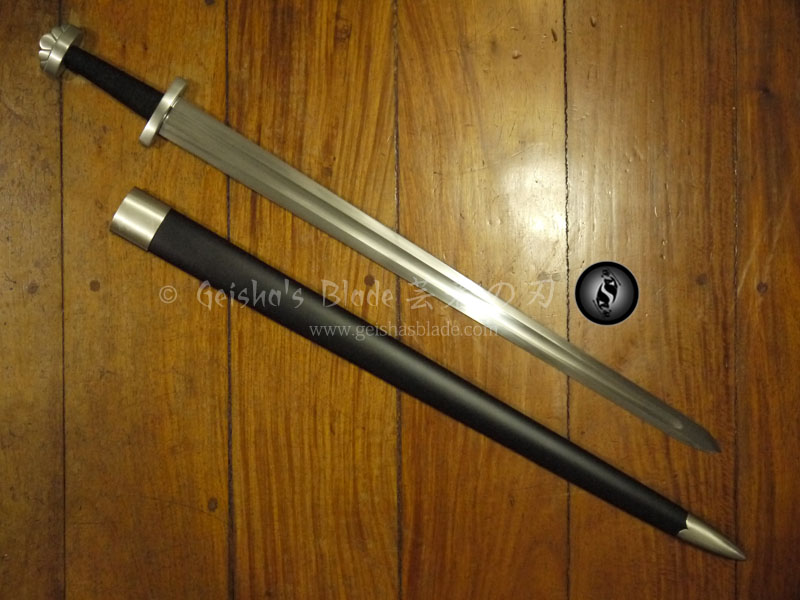














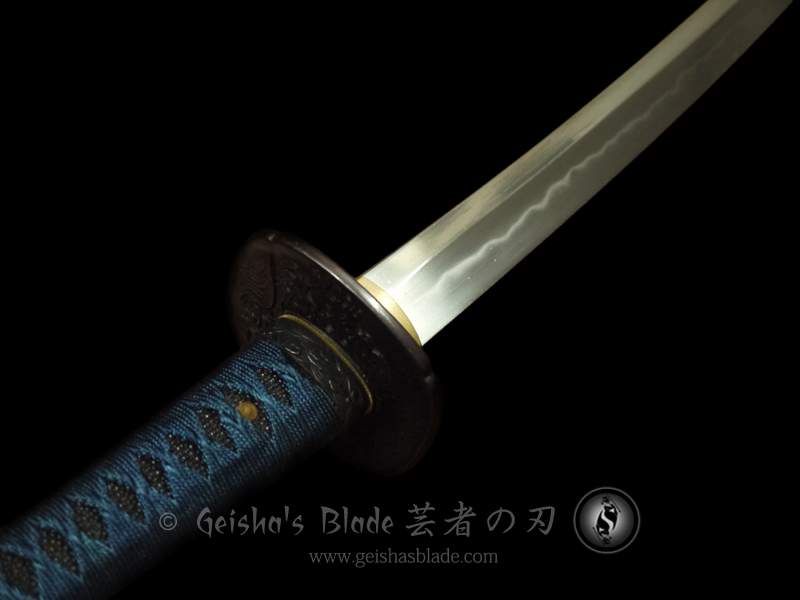







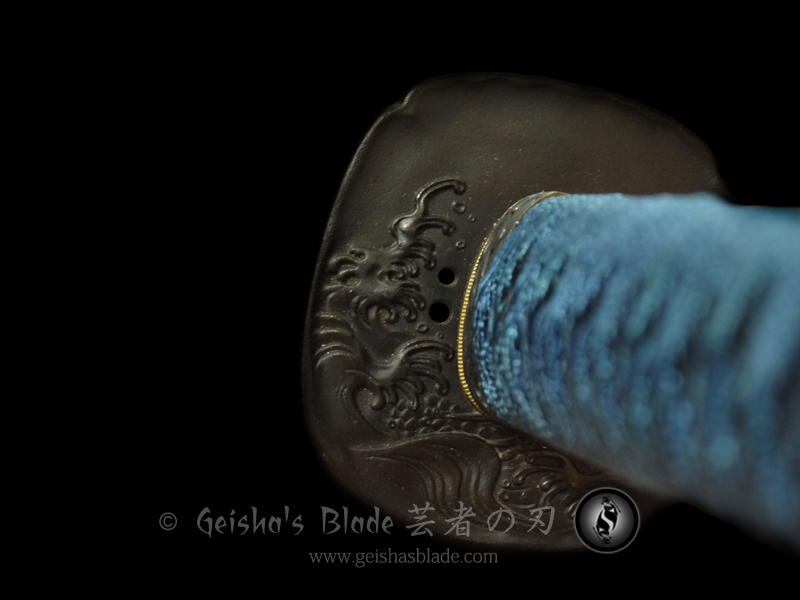












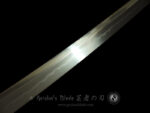

















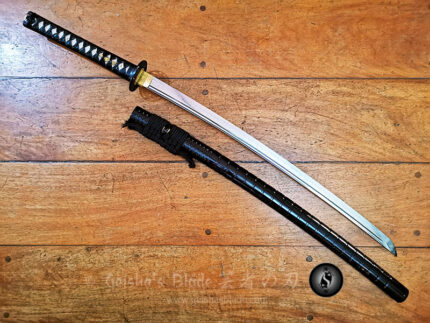

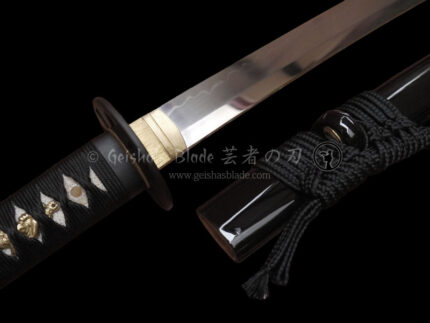
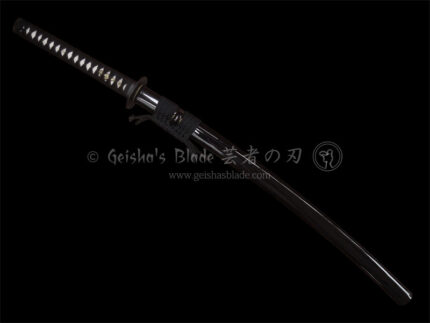

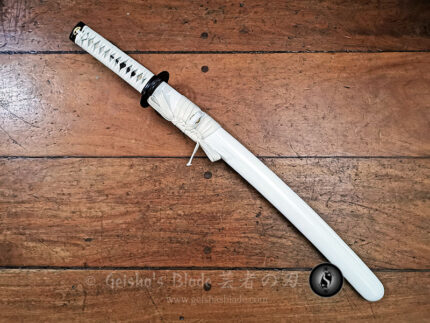




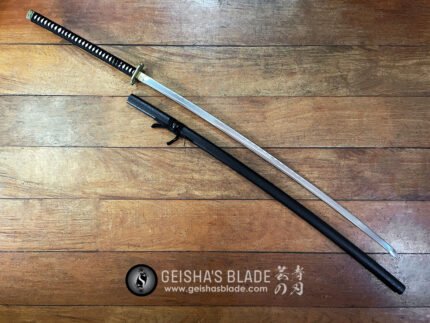







Reviews
There are no reviews yet.